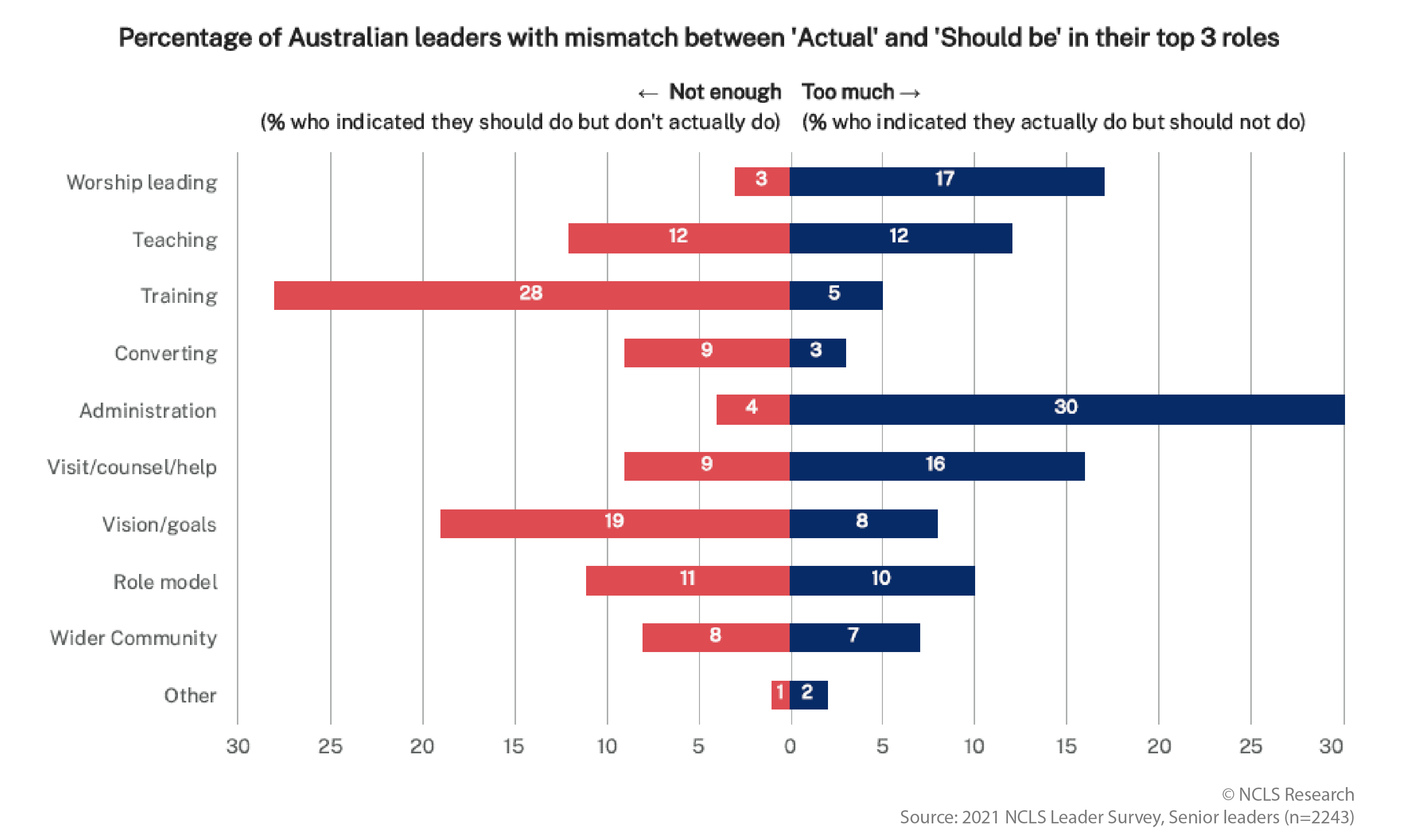Local church leaders do many different things in the course of their working week. The priority given to their various roles depends on the needs of the church, the resources and other support available, as well as the leader’s own personal skills and sense of vocation.
But what about the expectations each leader has for their role? Stress can increase when the reality of a leader’s work doesn't match with their expectations, or if the leader is in some way mismatched or not sufficiently trained for that role.
The 2021 National Church Life Survey (2021 NCLS) asked church leaders to, "Mark what you think are the main roles you ACTUALLY carry out, and what you think SHOULD BE your main roles. (Mark up to THREE options)"
What leaders are actually doing
Local senior leaders said their most common role was to ‘conduct worship/administer sacraments’ (57% of leaders) and ‘teach people about the Christian faith’ (55%). ‘Administer the work of the local church’ and ‘visit, counsel and help people’ were the main roles for 42% and 31% of leaders respectively.
Apart from ‘visit, counsel and help people’, the results show a small drop since the 2016 NCLS.
What leaders think they should be doing
When we asked leaders what they thought they should be doing, 56% of leaders thought their priority should be to ‘teach people about the Christian faith’, 47% said their priority should be to ‘train people for ministry and mission’ and 44% said ‘conduct worship or administer the sacraments’.
It should be noted that 40% of senior church leaders also indicated that they should be looking to ‘develop a vision and goals for the future.’
Role mismatch
In the chart below we see that the greatest areas of mismatch are training and administration.
Some 28% of leaders want to have ‘training others’ in their top 3 activities but do not actually do that. As well, some 30% of leaders have ‘administration’ in their top 3 activities and do not believe this should be their priority.
It appears the day-to-day ministry responsibilities do not always line up with the leader’s ideal priorities of teaching, training and casting vision.

NCLS researcher Sam Sterland says that integration—having a good fit between a leader’s aspirations and their ministry tasks—is important for the wellbeing of leaders.
“A mismatch like this can lead to frustration and disillusionment if leaders are not working in the areas that they expected,” says Sam.
Leaders can consider what areas match well with their passions and priorities, identify parts of their roles that they find challenging and find ways to grow in areas of challenge. Acceptance of all aspects of their role and current fit is also important.
For more information on role mismatch in ministry watch Sam's video presentation.
More information on factors that help leaders to thrive in ministry is also available in our article: Leader wellbeing: the impact of effectiveness and stress



